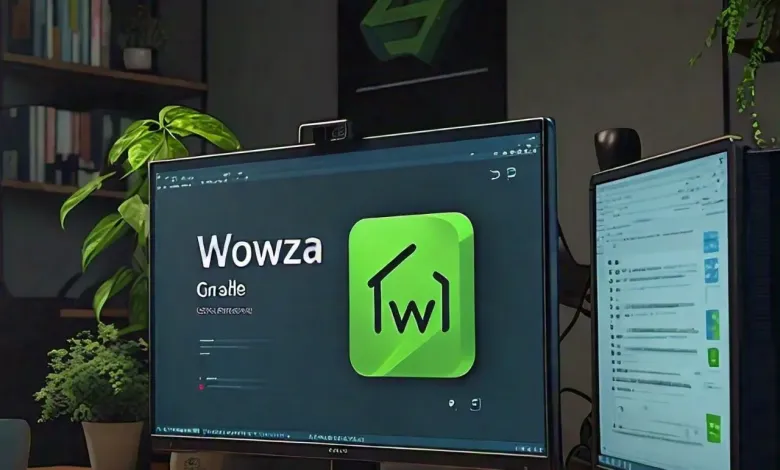Introduction to the Wowza Gradle Plugin
The Wowza Gradle Plugin streamlines the development and deployment process for the Wowza Streaming Engine. Wowza Streaming Engine is a robust media server software for live streaming, on-demand video, and more. The Gradle Plugin simplifies various tasks associated with Wowza projects. Developers rely on this plugin to reduce manual configurations, automate repetitive processes, and improve overall project management.
With the Wowza Gradle Plugin, developers find a set of valuable tools. This plugin integrates into the Gradle build system and allows developers to quickly build, test, and deploy Wowza modules. Automated builds, clear project structures, and dependency management make it essential for a more efficient development process. Users seeking to streamline their Wowza project workflows benefit from thoroughly understanding the Wowza Gradle Plugin. This guide will cover everything from setting up the plugin to building and deploying Wowza projects.
Understanding the Wowza Gradle Plugin
The Wowza Gradle Plugin is a specialized tool designed for the Wowza Streaming Engine. Developers working on Wowza projects need reliable ways to manage builds, configurations, and deployments. The Gradle Plugin helps by automating these tasks, providing better project structure, and simplifying dependency management.
The plugin integrates into Gradle’s existing build system. With Gradle’s automation, the process of building, packaging, and deploying Wowza modules becomes faster. For complex projects, Gradle simplifies handling dependencies and ensures compatibility. This plugin makes it easier to manage Wowza projects consistently and efficiently. Anyone working with Wowza can save time and reduce errors using the Wowza Gradle Plugin. Understanding its essential functions allows developers to make the most of its features.
Benefits of Using the Wowza Gradle Plugin
Using the Wowza Gradle Plugin provides several benefits. Automation is the most significant advantage. Tasks like building, packaging, and deploying take time, and automation helps developers avoid repetitive manual work. By automating these tasks, the plugin reduces the time and effort needed to develop Wowza projects.
The plugin also improves project structure. Wowza projects need to be organized in a way that is manageable and easy to understand. Gradle provides a consistent build framework, making maintaining code and project files easier. The Wowza Gradle Plugin integrates with other tools and dependencies, creating a smooth development experience. With improved project structure, builds are more reliable, reducing the chances of errors during deployment. These benefits make the Wowza Gradle Plugin a valuable tool for anyone developing Wowza Streaming Engine projects.
Setting Up the Wowza Gradle Plugin
Setting up the Wowza Gradle Plugin involves a few steps. First, ensure that Gradle and Wowza Streaming Engines are installed on your system. The plugin requires these installations to function correctly. Once installed, the next step is to add the Wowza Gradle Plugin to your build—gradle file.
In the build. In the gradle file, specify the plugin ID and the version number. Applying the plugin in the script allows you to access its features. Configuring the Wowza Streaming Engine’s home directory is another essential step. This configuration tells Gradle where to find the Wowza files. Additional settings, like module names, output directories, and other properties, should be configured based on your project needs. Developers can ensure smooth builds and deployments by setting up the plugin correctly.
Configuring the Wowza Gradle Plugin
After applying the plugin to the build, configuring the Wowza Gradle Plugin allows you to customize its functions for your project. Gradle file, the next step is to define the Wowza home directory. This directory is where the Wowza Streaming Engine files are located. Proper configuration of this directory is essential for the plugin to work correctly.
In the build. In the gradle file, you can specify other settings. For example, you can set the output directory where the plugin should place the built files. Additionally, configurations for target versions and dependencies can be defined. These configurations ensure that the Wowza Gradle Plugin works harmoniously with your project requirements. Proper configuration reduces errors and improves overall project efficiency. Configuring the plugin based on your project’s needs makes development faster and more reliable.
Building Wowza Modules Using the Gradle Plugin
Building Wowza modules with the Wowza Gradle Plugin is a straightforward process. The plugin provides several Gradle tasks like build, jar, and deploy. These tasks automate the process of compiling and packaging Wowza modules. The build task compiles the source code, while the jar task packages it into a Java Archive (JAR) file.
Developers can build Wowza projects using these tasks in a few commands. Automation of the build process reduces the time required for project compilation. In addition, the Wowza Gradle Plugin ensures consistent builds, which is essential for larger projects. With the automated build process, developers save time and reduce manual errors. Building Wowza modules with the Wowza Gradle Plugin is efficient and straightforward, making it an essential tool for Wowza Streaming Engine projects.
Deploying Wowza Projects with the Wowza Gradle Plugin
Deployment with the Wowza Gradle Plugin is simplified. The plugin provides tasks automatically deploying built modules to the Wowza Streaming Engine. The deploy task is commonly used for this purpose. Once the module is built, the deploy task moves it to the appropriate directories within the Wowza installation. This automation reduces the need for manual file transfers.
Automated deployment ensures that each deployment is consistent. Developers can deploy projects with a single command using the Wowza Gradle Plugin. The plugin handles all necessary file placements, reducing the risk of human error. This streamlined deployment process saves time and ensures reliability. Deploying Wowza projects with the Wowza Gradle Plugin is efficient, making it ideal for both development and production environments.
Troubleshooting Common Issues with the Wowza Gradle Plugin
Troubleshooting is essential when issues arise with the Wowza Gradle Plugin. Common problems include configuration errors and dependency conflicts. Errors often occur if the Wowza home directory needs to be correctly configured. Ensure that the Wowza home path is in the build. The gradle file matches the actual location of the Wowza Streaming Engine files.
Dependency conflicts are another frequent issue. Gradle can help manage dependencies, but conflicts may still occur. If you encounter dependency conflicts, check the build. Gradle file for any duplicate or incompatible dependencies. Resolving these issues often requires updating or excluding conflicting libraries. By addressing these common issues, developers can maintain a smooth development process. Troubleshooting is a part of any development process, and the Wowza Gradle Plugin is no exception.
Advanced Features of the Wowza Gradle Plugin
The Wowza Gradle Plugin offers advanced features for experienced developers. One helpful feature is custom task creation. Gradle allows you to create custom tasks based on your project needs. For example, you can make a task to run specific scripts or automate additional steps in the build process.
Another advanced feature is multi-project builds. Managing multiple modules within a single build process is essential for complex projects. The Wowza Gradle Plugin supports multi-project builds, making it easier to manage large Wowza projects. Advanced users can also take advantage of Gradle’s caching and incremental builds. These features improve build speed and efficiency by only recompiling changed parts of the project. Exploring these advanced features allows developers to tailor the Wowza Gradle Plugin to their specific requirements.
Conclusion: Maximizing Efficiency with the Wowza Gradle Plugin
The Wowza Gradle Plugin is an invaluable tool for Wowza Streaming Engine developers. From automating builds to simplifying deployments, it enhances productivity and reduces the chance of errors. By following the setup, configuration, and deployment steps outlined in this guide, developers can maximize the efficiency of their Wowza projects. Understanding how to use the Wowza Gradle Plugin ensures a smoother development experience.



